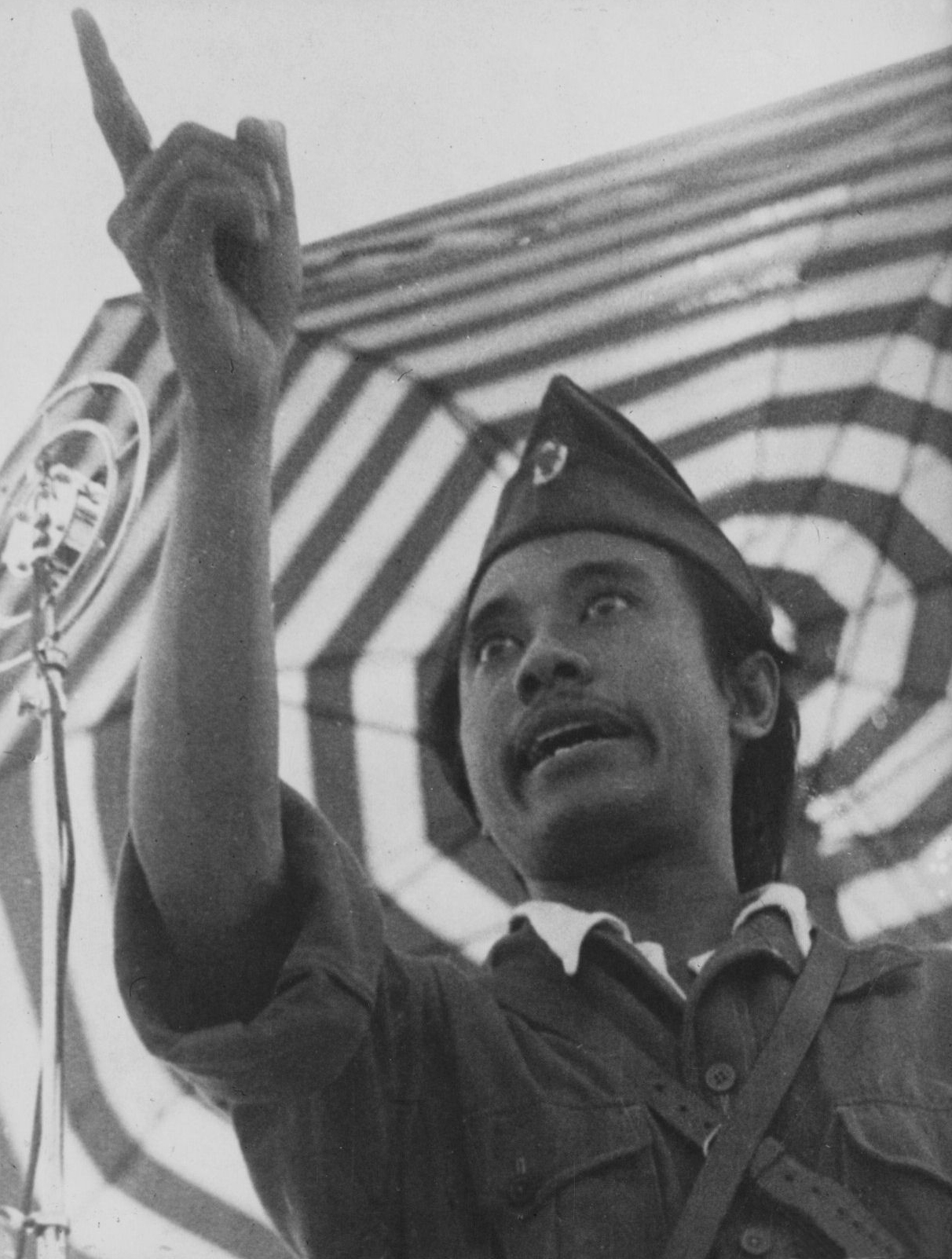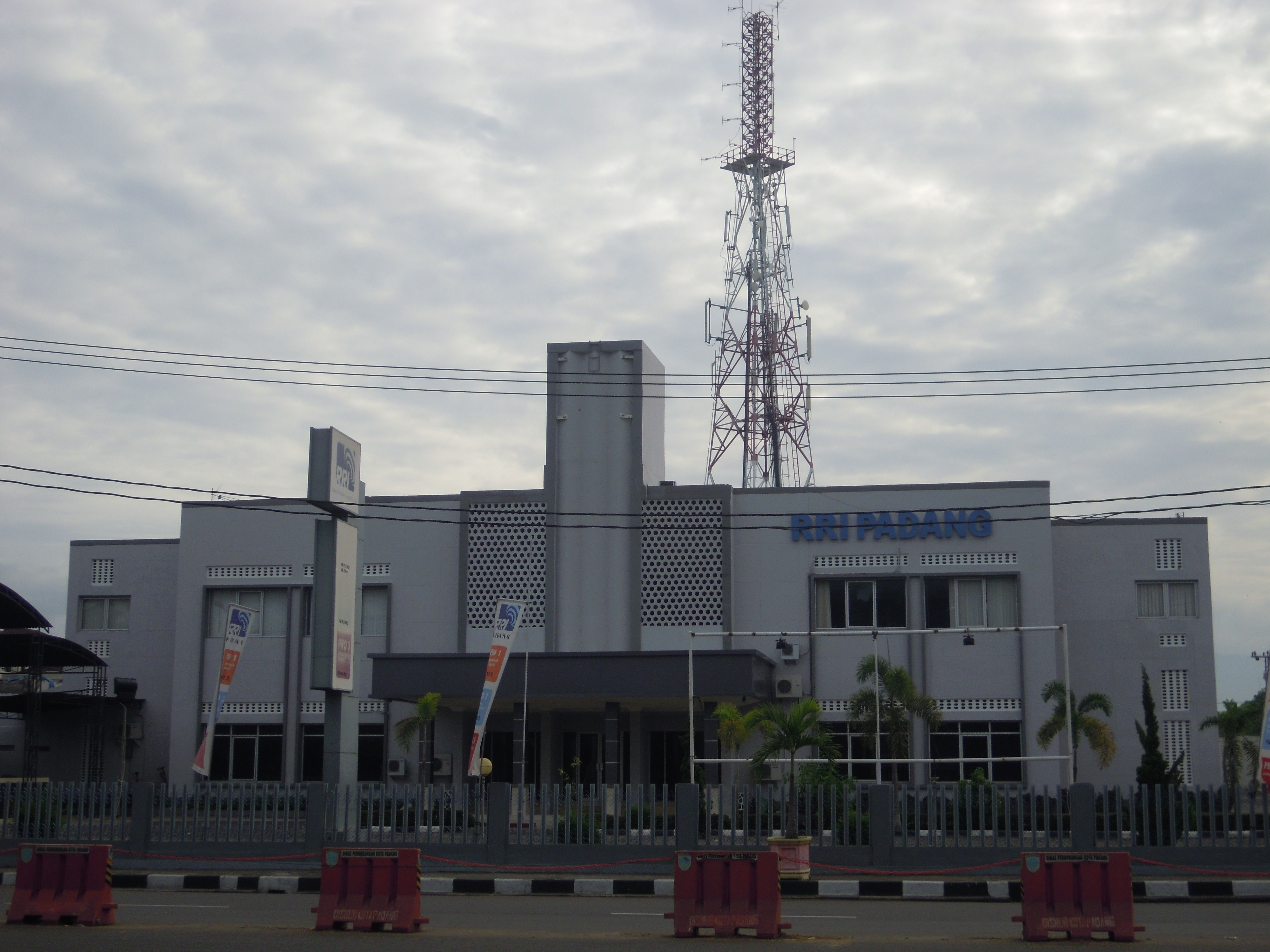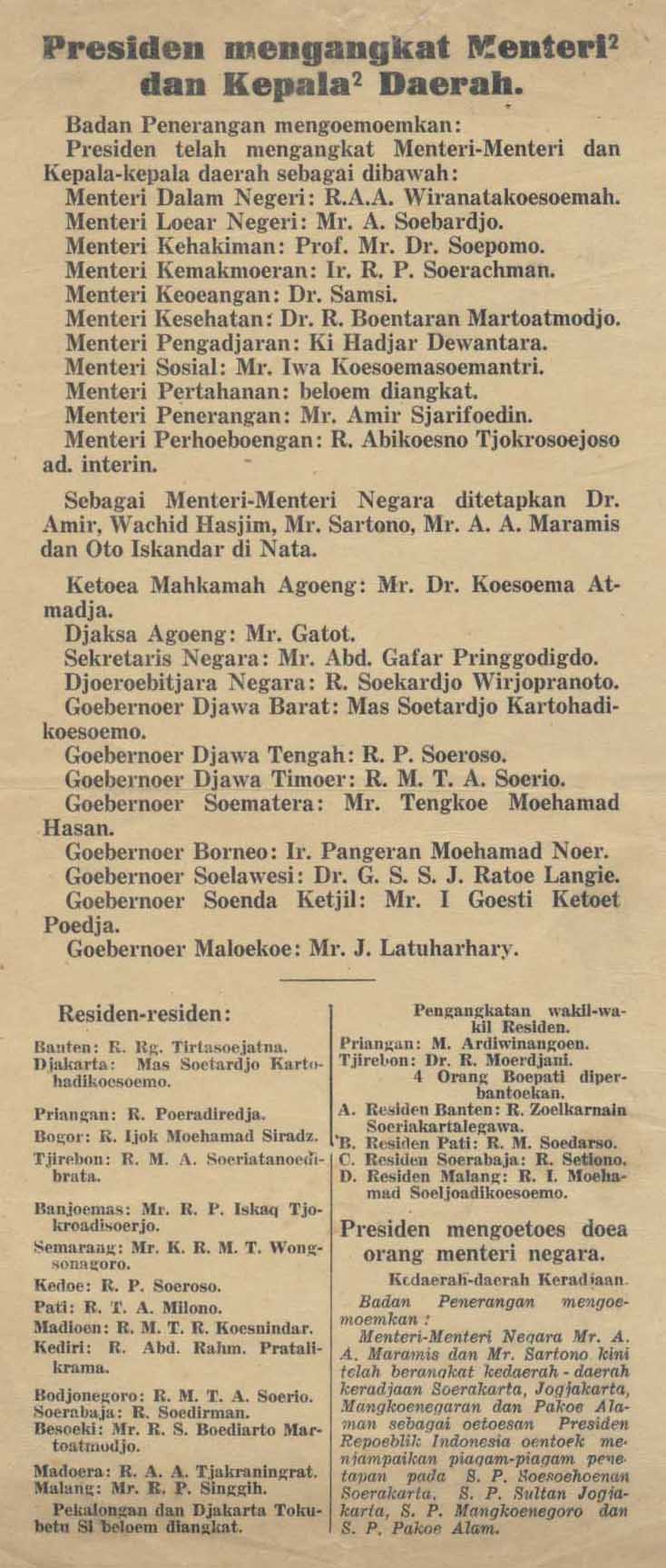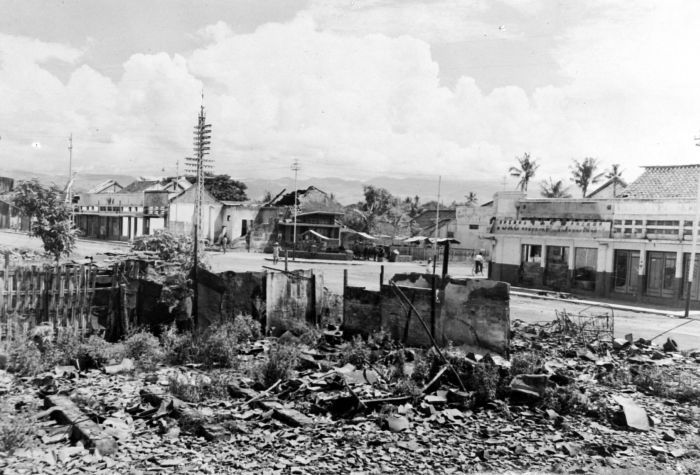|
1945 In Indonesia
Events in the year 1945 in Indonesia. The country had an estimated population of 68,517,300 people. Incumbents * President: Sukarno (from 18 August) * Vice President: Mohammad Hatta (from 18 August) * Prime Minister: Sutan Sjahrir (from 14 November) * Chief Justice: Kusumah Atmaja (from 18 August) Events * 8 July ŌĆō Establishment of the Islamic University of Indonesia, in Sleman, Yogyakarta * 17 August ŌĆō Proclamation of Indonesian Independence * 17 August ŌĆō Start of the Indonesian National Revolution * 22 August ŌĆō Launch of Voice of Indonesia * August ŌĆō Start of Bersiap * 2 September ŌĆō Establishment of the Presidential Cabinet * 7 September ŌĆō Disestablishment of ''Asia Raja'' newspaper * 11 September ŌĆō Establishment of the Radio Republik Indonesia * 17 September ŌĆō Establishment of the Indonesian Red Cross Society * 27 October ŌĆō 20 November ŌĆō Battle of Surabaya * 11 November ŌĆō VP Mohammad Hatta issued the Vice-Presidential Edict No.X * 14 November ŌĆ ... [...More Info...] [...Related Items...] OR: [Wikipedia] [Google] [Baidu] |
Indonesia
Indonesia, officially the Republic of Indonesia, is a country in Southeast Asia and Oceania between the Indian and Pacific oceans. It consists of over 17,000 islands, including Sumatra, Java, Sulawesi, and parts of Borneo and New Guinea. Indonesia is the world's largest archipelagic state and the 14th-largest country by area, at . With over 275 million people, Indonesia is the world's fourth-most populous country and the most populous Muslim-majority country. Java, the world's most populous island, is home to more than half of the country's population. Indonesia is a presidential republic with an elected legislature. It has 38 provinces, of which nine have special status. The country's capital, Jakarta, is the world's second-most populous urban area. Indonesia shares land borders with Papua New Guinea, East Timor, and the eastern part of Malaysia, as well as maritime borders with Singapore, Vietnam, Thailand, the Philippines, Australia, Palau, and India ... [...More Info...] [...Related Items...] OR: [Wikipedia] [Google] [Baidu] |
Indonesian National Revolution
The Indonesian National Revolution, or the Indonesian War of Independence, was an armed conflict and diplomatic struggle between the Republic of Indonesia and the Dutch Empire and an internal social revolution during Aftermath of WWII, postwar and Dutch East Indies#World War II and independence, postcolonial Indonesia. It took place between Indonesian Declaration of Independence, Indonesia's declaration of independence in 1945 and the Netherlands' DutchŌĆōIndonesian Round Table Conference, transfer of sovereignty over the Dutch East Indies to the Republic of the United States of Indonesia at the end of 1949. The four-year struggle involved sporadic but bloody armed conflict, internal Indonesian political and communal upheavals, and two major international diplomatic interventions. Dutch military forces (and, for a while, the forces of the World War II Allies, World War II allies) were able to control the major towns, cities and industrial assets in Republican heartlands on Ja ... [...More Info...] [...Related Items...] OR: [Wikipedia] [Google] [Baidu] |
1945 In Indonesia
Events in the year 1945 in Indonesia. The country had an estimated population of 68,517,300 people. Incumbents * President: Sukarno (from 18 August) * Vice President: Mohammad Hatta (from 18 August) * Prime Minister: Sutan Sjahrir (from 14 November) * Chief Justice: Kusumah Atmaja (from 18 August) Events * 8 July ŌĆō Establishment of the Islamic University of Indonesia, in Sleman, Yogyakarta * 17 August ŌĆō Proclamation of Indonesian Independence * 17 August ŌĆō Start of the Indonesian National Revolution * 22 August ŌĆō Launch of Voice of Indonesia * August ŌĆō Start of Bersiap * 2 September ŌĆō Establishment of the Presidential Cabinet * 7 September ŌĆō Disestablishment of ''Asia Raja'' newspaper * 11 September ŌĆō Establishment of the Radio Republik Indonesia * 17 September ŌĆō Establishment of the Indonesian Red Cross Society * 27 October ŌĆō 20 November ŌĆō Battle of Surabaya * 11 November ŌĆō VP Mohammad Hatta issued the Vice-Presidential Edict No.X * 14 November ŌĆ ... [...More Info...] [...Related Items...] OR: [Wikipedia] [Google] [Baidu] |
First Sjahrir Cabinet
The first Sjahrir Cabinet ( id, Kabinet Sjahrir Pertama) was the second Indonesian cabinet, named after the Prime Minister. It served from November 1945 to February 1946. Background The first Sjahrir cabinet was established following the 11 November 1945 demand from the Central Indonesian National Committee, which was the ''de facto'' legislature, that the cabinet be responsible to it, not to President Sukarno. The existing cabinet was dismissed and Sutan Sjahrir was asked to become prime minister. He agreed to do so on the condition he was allowed to select his own cabinet. The cabinet lineup was announced on 14 November 1945.Kahin (1952) p169Ricklefs (1982) p206 Composition None of the ministers had served in the previous cabinet. The government was intended to be inclusive, with representation from the nationalist and the religious parties, the latter grouping being represented by the PSII.Simanjuntak (2003) pp. 52-54 Changes There were several changes o ... [...More Info...] [...Related Items...] OR: [Wikipedia] [Google] [Baidu] |
Vice President
A vice president, also director in British English, is an officer in government or business who is below the president (chief executive officer) in rank. It can also refer to executive vice presidents, signifying that the vice president is on the executive branch of the government, university or company. The name comes from the Latin term ''vice'' meaning "in place of" and typically serves as '' pro tempore'' (Latin: ŌĆÖfor the time beingŌĆÖ) to the president. In some countries, the vice president is called the ''deputy president''. In everyday speech, the abbreviation ''VP'' is used. In government In government, a vice president is a person whose primary responsibility is to act in place of the president on the event of the president's death, resignation or incapacity. Vice presidents are either elected jointly with the president as their running mate, or more rarely, appointed independently after the president's election. Most governments with vice presidents have one perso ... [...More Info...] [...Related Items...] OR: [Wikipedia] [Google] [Baidu] |
Battle Of Surabaya
The Battle of Surabaya was fought between regular infantry and militia of the Indonesian nationalist movement and British and British Indian troops as a part of the Indonesian National Revolution against the re-imposition of Dutch colonial rule. The peak of the battle was in November 1945. The battle was the largest single battle of the revolution and became a national symbol of Indonesian resistance. Considered a heroic effort by Indonesians, the battle helped galvanise Indonesian and international support for Indonesian independence. 10 November is celebrated annually as Heroes' Day (). By the time the Allied forces arrived at the end of October 1945, the ''Pemuda'' ("youth") foothold in Surabaya City was described as "a strong unified fortress". Fighting broke out on 30 October after the British commander, Brigadier A. W. S. Mallaby was killed in a skirmish. The British retaliated with a co-ordinated sweep that began on 10 November, under the cover of air attacks. Althou ... [...More Info...] [...Related Items...] OR: [Wikipedia] [Google] [Baidu] |
Indonesian Red Cross Society
The Indonesian Red Cross Society ( id, Palang Merah Indonesia) is a humanitarian organization in Indonesia. It is a member of International Federation of Red Cross and Red Crescent Societies. Indonesia is the one of the very few Muslim-majority countries to use the Red Cross as its symbol. Indonesia is neither a strictly faith-based nor secular nation. In mid-2013, the Indonesian Red Cross Society had 32,568 people in its Volunteer Corps, 19,294 Individual Volunteers and 893,381 Blood Donor Volunteers, for a total of 945,243 persons, which is recorded as the highest number of volunteers in the world. History The IRCS was created on 17 September 1945, exactly one month after Indonesia's independence."History" . Indonesian Red Cross Society. President Su ... [...More Info...] [...Related Items...] OR: [Wikipedia] [Google] [Baidu] |
Radio Republik Indonesia
''Radio Republik Indonesia'' (Radio of the Republic of Indonesia, abbreviated as RRI), legally ''Lembaga Penyiaran Publik (LPP) Radio Republik Indonesia'' ( Public Broadcasting Institution Radio of the Republic of Indonesia), is a public radio network of Indonesia. Founded on 11 September 1945, it is the first radio network in Indonesia. RRI headquarters are located on Medan Merdeka Barat Street in Central Jakarta. RRI has several radio channels broadcasts all over Indonesia and abroad to serve all Indonesian citizens throughout the nation and overseas. RRI also provides information about Indonesia to people around the world. Voice of Indonesia is the division for overseas broadcasting. History RRI was established on 11 September 1945 by several figures who previously operated several Japanese radio stations in 6 cities. A meeting attended by the station delegates at Adang Kadarusman house on Menteng resulted in the decision to set up ''Radio Republik Indonesia'' by choosing ... [...More Info...] [...Related Items...] OR: [Wikipedia] [Google] [Baidu] |
Asia Raja
''Asia Raya'' (also spelled ''Asia-Raja''; 'Grand Asia') was a newspaper published in the Dutch East Indies (modern day Indonesia) during the Japanese occupation. Background When the Japanese Empire occupied the Dutch East Indies in 1942, they tasked a group of writers and intellectuals to better integrate the native society; this was done in other occupied countries as well. Approximately 190 people of this "Propaganda Division" arrived in Batavia (modern day Jakarta) in early 1942, including novelist Tomoji Abe. Among their efforts was the founding of a newspaper, entitled ''Asia Raya''. This newspaper involved both Japanese and native persons in his management and publication. History The first edition of ''Asia Raya'', totaling four pages in length, was published on 29 April 1942. It was subsequently published daily. The initial print run of 15,000 copies sold at 10 Netherlands Indies cents each. Much of its native editorial staff originated from the Great Indonesia Part ... [...More Info...] [...Related Items...] OR: [Wikipedia] [Google] [Baidu] |
Presidential Cabinet (Indonesia)
The Presidential Cabinet ( id, Kabinet Presidensial) was the first cabinet established by Indonesia following the 17 August 1945 Indonesian Declaration of Independence. It comprised 20 ministers and four officials. Its term of office ran from 2 September to 14 November 1945. Background Indonesian had been under Japanese occupation since 1942, but by 1943, realizing they were losing the war, the Japanese appointed Indonesian advisors ( ja, ÕÅéõĖÄ, san'yo) to the administration and appointed nationalist leader Sukarno leader of a new Central Advisory Board (''Chuo Sani-kai'' ja, õĖŁÕż«ÕÅéĶŁ░õ╝Ü}) in Jakarta.Ricklefs (1982) p193 On 7 August, the day after the atomic bombing of Hiroshima, the Preparatory Committee for Indonesian Independence ( id, Panitia Persiapan Kemerdekaan Indonesia) or PPKI was established. Sukarno was chairman, and Hatta vice-chairman. On 19 August 1945, this body created 12 ministries for Indonesia's first cabinet. The cabinet as formed contained ''sanyo'' ... [...More Info...] [...Related Items...] OR: [Wikipedia] [Google] [Baidu] |
Bersiap
''Bersiap'' is the name given by the Dutch to a violent and chaotic phase of the Indonesian National Revolution following the end of World War II. The Indonesian word ''bersiap'' means 'get ready' or 'be prepared'. The ''Bersiap'' period lasted from August 1945 to November 1947. In Indonesia, other terms aside from ''bersiap'' are commonly used, such as ''gedoran'' in Depok, ''ngeli'' in Banten and surrounding West Java, and ''gegeran'' and ''dombreng'' in Central Java. The period started with revolutionary violence occurring during the increasing power vacuum left by the retreating Japanese occupational forces and the gradual buildup of a British military presence but before the official handover to a Dutch military presence. The term refers to that period when Sukarno declared Indonesian independence on 17 August 1945. Thousands of Eurasian people were killed by Indonesian natives. Many people were also killed among non-European groups such as Chinese and native Indonesians ... [...More Info...] [...Related Items...] OR: [Wikipedia] [Google] [Baidu] |




